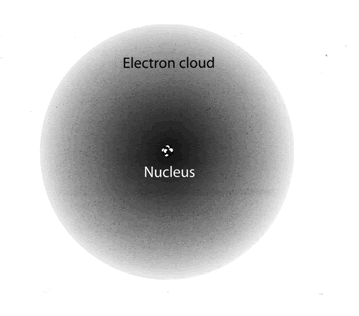Electric charge
Electric charge, or charge for short, is a fundamental physical property that causes objects to feel an attractive or repulsive force toward one another. The fundamental unit of charge is the coulomb (C). There are two types of charge: positive charge (exhibited by protons), and negative charge (exhibited by electrons). Coulomb's law describes the electric forces between charged particles; if the charges move the electromagnetic force gets more complicated.
The movement or flow of charged particles is what produces electricity and magnetism. In fact, a moving stream of electric charge is electric current. This movement of charge can be induced by the relative movement of a magnet and coil of wire—this is the fundamental design for electric generators.
When the number of electrons in an atom doesn't equal the number of protons, the atom is said to have a net charge. Charges add just like positive and negative numbers, so a charge of +1 exactly cancels a charge of -1. This is why positive and negative numbers are used to represent charge, the charges cancel just like positive and negative numbers. When a specific atom has a net charge, the atom is said to be an ion (the ion page includes a PhET simulation about this). The process of adding or removing charge from an atom is called ionizing, and when that's done with radiation, that's called ionizing radiation.
Charge can also be separated from atoms (therefore making some ions) by rubbing different types of materials together. This is what creates an electric field around a balloon that's been rubbed on someone's hair, or a towel. This is also why static electricity builds up on clothes that have been tumbling around in a clothes dryer. There's a PhET simulation below on separating charge with friction.
To learn more about charge please see hyperphysics.
PhET Simulation on Charge from friction
The University of Colorado has graciously allowed us to use the following PhET simulation. Static electricity comes from the separation of positive and negative charge through friction (this happens in a clothes dryer, which is why dryer sheets are needed). Net charges cause an electric force; note the polarization that happens in the wall. Check out the PhET animation below to explore how it works.
For Further Reading
For further information please see the related pages below:
- Electric field
- Electric force
- Magnet
- Electric current
- Or explore a random page!
References
- ↑ "The electron cloud" internet: http://letstalkaboutscience.wordpress.com/2012/02/16/the-electron-cloud/


